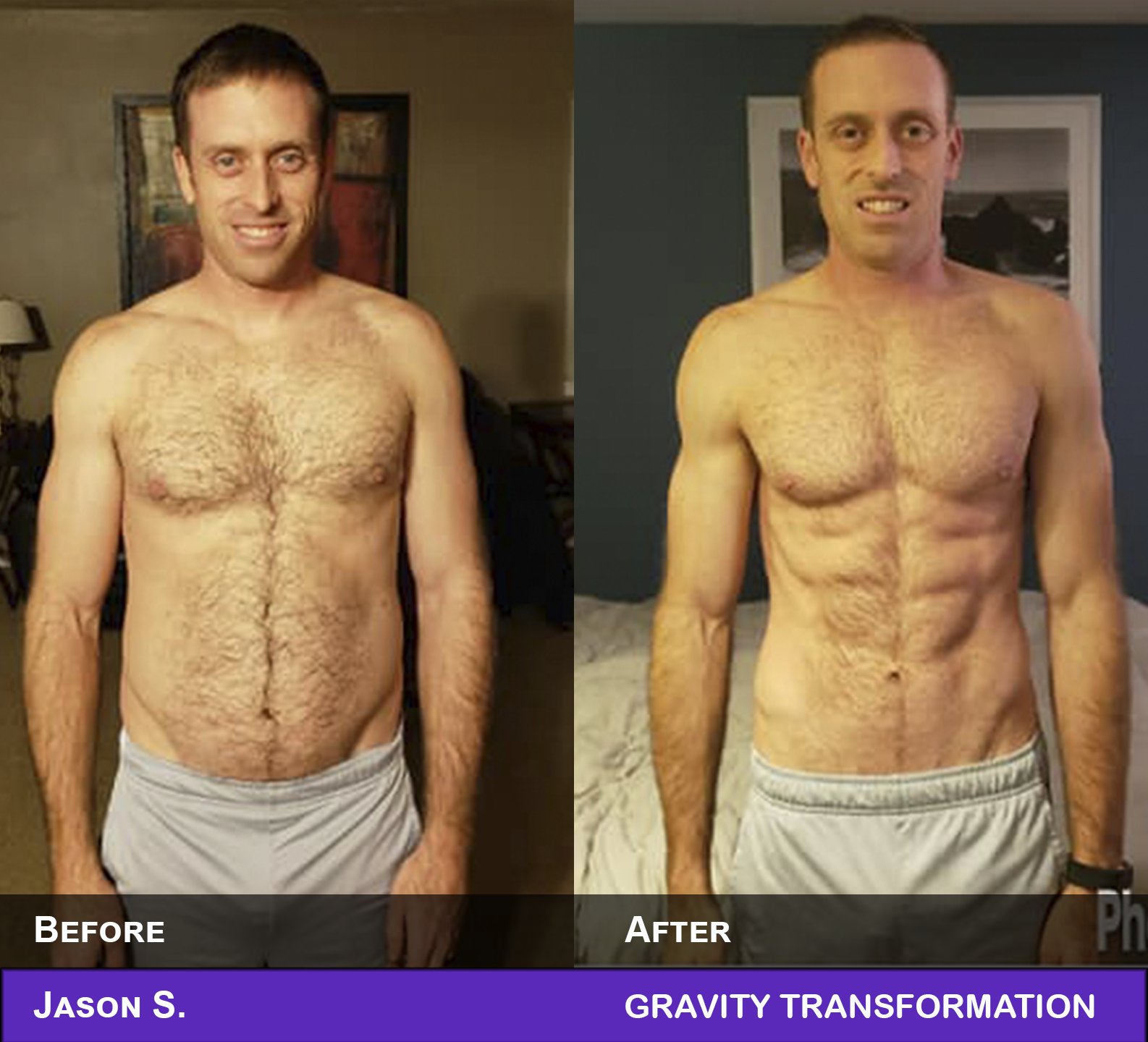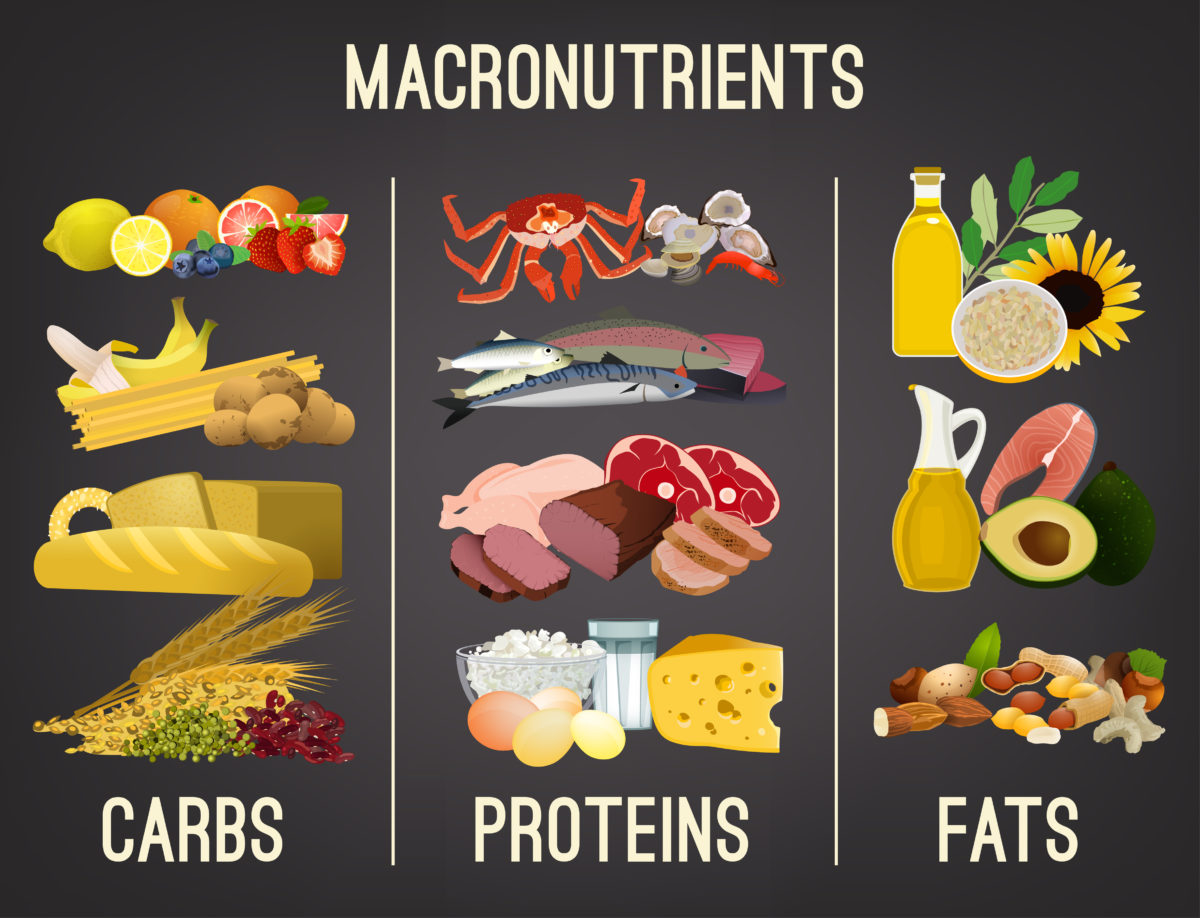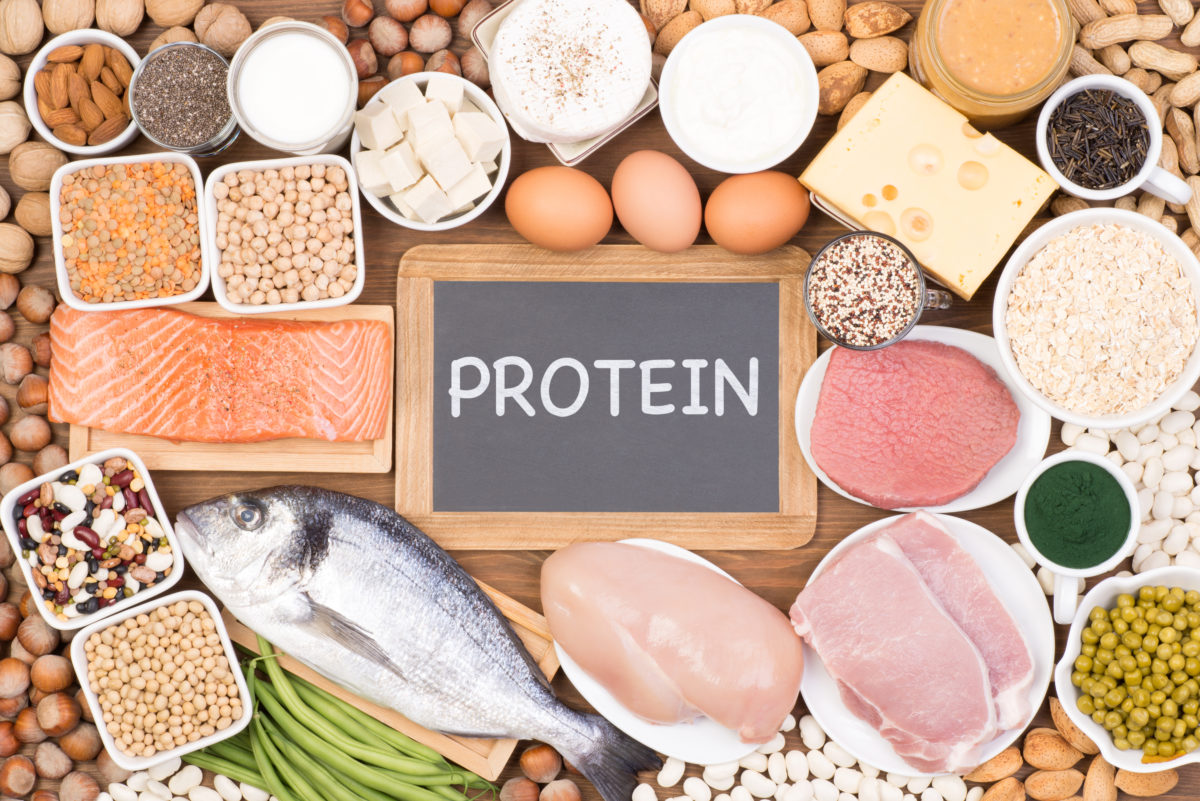How To Build Muscle (5 EASY STEPS!)
Check out my client Jason’s transformation where he gained a whole bunch of muscle.

Let me start by saying that a lot of trainers out are going to hate me because today I’m going to give you everything you need from a to z to start building muscle faster than ever.
And the reason why I feel obligated to give you all of this step by step info for free is that building muscle can be very confusing when it really doesn’t have to be.
A lot of people want to start training in a way that helps them build muscle faster but there’s a lot of information out there on the topic that can make you get stuck in analysis paralysis and prevent you from taking action.
And I can tell you from first-hand experience taking action and not over-analyzing is the very thing that’s required to build muscle.
So in today’s video, I’ve narrowed down the list of what you have to do to build the most muscle in the shortest amount of time to just five steps.
This way you could follow only these five actionable steps starting today and start seeing quick results in the mirror right away.
So…Step one is to calculate the number of calories and macros that you need to put yourself into a caloric surplus.
The easiest way to do this is to calculate your daily calories by multiplying your weight by 18 if you’re a man and 16 if you’re a woman.
I weigh about 208 pounds so you’ll see this being used as an example as I walk you through these calculations.
So the amount you weigh in pounds is going to be the number of grams of protein that you need to eat daily.
Next, let’s calculate fat. Super simple. Take your weight in pounds and divide it in half. That’s the total amount of fat you’ll be having per day in grams.

Now to calculate carbs we want to convert the grams of protein and fat into calories. Multiply your grams of protein by 4 since there are 4 calories in every gram of protein
and multiply your grams of fat by 9 since there are 9 calories in every gram of fat then add the two numbers together.
Subtract this number from your total daily calories that you originally got by multiplying your weight by 18 for men or 16 for women.
Since you’re subtracting your fat and protein calories from your total calories this will give you your carb calories.
And then for the last step, you divide this number of carb calories by 4 since there are also 4 calories per gram of carb.
So now you have a very good baseline of how many grams of protein, carbs, and fats you need to build muscle and this exact macronutrient split is the one I recommend.

Even though this will add on a couple extra calories, since we’re aiming for a caloric surplus it not gonna hurt and this method of swapping 2 grams of carbs for 1 gram of fat is the simplest way to make adjustments.
Now we can move on to step 2 which is to fill all of those macros with Whole single-ingredient Foods that’ll help us build muscle.
If you’re a vegetarian or a vegan you can get a lot of protein from seitan, tofu, tempeh, nutritional yeast, hemp hearts, spirulina, and black bean, mung bean, or chickpea pasta.
For carbs, you want to stick mostly to low glycemic carbohydrates unless you’re consuming them directly before or directly after the workout.
Low glycemic carbohydrates include brown rice, yams, sweet potatoes, quinoa, buckwheat, couscous, barley, oatmeal, brown rice pasta, Ezekiel bread, and beans.
For fat, we got avocado, nuts, nut butter, olive oil, coconut oil, butter preferably from grass-fed cows, and cheese.

Finally, we have fruits and vegetables. With fruits and vegetables, it can be a little tricky when you’re trying to eat enough food to build muscle.
This is because you need fruits and vegetables for your micronutrients but the problem is that they’re very filling and not very calorically dense
so they’re not really going to help you gain weight and build muscle. For this reason, I highly recommend juicing with a wide variety of fresh fruit and vegetables to get your micronutrients in without all the fiber that will fill your stomach up.
So out of all these foods you would just choose which ones you enjoy eating the most and incorporate them into your meal plan.
You can either pre-plan exactly what amounts of each macronutrient you’ll be putting into each meal, or you can just eat these foods throughout the day
and as you eat them plug them into a calorie calculator app that you can download right onto your phone and make adjustments throughout the day.

Now for some reason, people believe that cutting fat is really hard because you have to restrict foods and cut calories away from your diet,
but they think that bulking up and gaining muscle is easy because you have more freedom with your diet and get to eat until you’re full.
Well, that’s just plain wrong. The reason that people feel like that is that everyone knows that if you exceed your calories while cutting you’re not going to lose fat.
But for some reason when people are feeling full when their goal is to gain muscle they justify not eating all the required calories and macros based on their calculations.
And then they’re surprised when they’re not gaining any muscle. It works both ways, the laws of thermodynamics don’t change when you’re trying to gain muscle.
Just like you’ll feel hungry when cutting, you better get used to feeling really full when gaining muscle.

So to manage that feeling of fullness I recommend spreading your meals out throughout the day because it’s very unlikely that you’ll be able to eat all the required calories and macros within 1 or two meals especially if you’re trying to eat clean and do a lean bulk.
Let’s move on to tip number 3 which is our first training principle… progressive overload. I don’t care what anyone told you before high reps low reps light weight heavyweight, progressive overload is the number one training stimulus that’s required to gain muscle.
The reason why Progressive overload is so important is for two reasons. One, muscle is metabolically active tissue and for survival reasons, your body doesn’t want to increase the amount of energy it needs to spend per day
so it doesn’t want to add on muscle unless it absolutely has to and progressive overload is the best way to make your body feel like it has to.
Two is because your body is a very efficient machine that quickly begins to adapt to whatever physical stressor you place on it.
This includes stress placed on your body from exercise. Your body will typically adapt to the volume and intensity level of all of your exercises and workouts within a matter of 4 to 6 weeks and much faster for beginners.
So when you start lifting a certain weight it might be challenging for you when you first start but since your body is the efficient machine that it is after you break down that muscle tissue

your body will respond by increasing protein synthesis, increasing the strength and resilience of your current muscle fibers and it’ll also respond by building more muscle in order to be able to handle the new stress that you’re placing on your body.
But unfortunately continuing to do that same weight load or continuing to work at the same intensity level that worked for you so well before,
it won’t continue working for you anywhere near to the degree that it was and you’ll notice that over time as your body adapts lifting that same weight becomes easier and easier easier.
This is something known as general adaption syndrome. Now a lot of people will tell you that there are all different types of ways that you can progressively overload your workouts.
However, I want you to know that the number one way to do it as a natural if your goal is to strictly build more muscle is by increasing your intensity by increasing the weight load used over time.

Now it’s not always easy to increase the weight you’re using. And unfortunately this actually only gets harder with time because everyone does have a natural Peak in their strength.
So some things that can help is upping the weight load by very small increments that’s why you have 2.5 pounds plates at your gym.
Also, remember to work within a rep range not just aim for a certain amount of reps like 8 reps. A rep range would 5 to 8 reps.
So you might start with a weight only being able to do it for 5 reps. Then as you get stronger you eventually can do that weight for 8 reps.
Once you hit that upper end of your rep range, slightly increase the weight, and this will likely drop the number of reps you can squeeze out back to only 5 or 6 reps but with that heavier load.

Now with that heavier load, the goal is to work your way up to the top of your rep range and up the weight again.
Alternating between increasing weight and dropping your reps can help you make the required transitions from one weight load to the next so you can build more muscle.
One last thing about progressive overload, the exercises that you want to focus on and incorporate the most into your program are the major compound lifts.
To make it super simple I guarantee that if you’re constantly getting stronger and stronger in these key exercises as long as you’re also hitting your macronutrient requirements for the day you will experience very fast muscle growth.

Also, I recommend split training where you break down your routine into something like chest and back one day, legs the next, and shoulders, biceps, triceps and as the following day, the day off, then repeat.
This will allow you to work your muscles at a very intense level twice a week and because you’ll be hitting them more often with these intense workouts you’ll gain muscle faster.
Moving on tip number 4 is periodization, now you may have heard me talk about it before, but periodization is going to help you bust through plateaus and it’ll help you accelerate the rate at which you can progressively overload your workouts…which again is the number training stimulus to build more muscle.
To sum it up simply periodization is the process of breaking up your work out into periods of low moderate or high rep ranges combined with low moderate or high weight loads.
Your low rep range could be roughly 3 to 4 reps and your high rep range could be 12 to 15 reps. You would spend two to three weeks working on each rep range and you would do
this because each rep range has benefits that will transfer over to the other rep ranges helping you get stronger and build muscle much faster.

The three to four rep range allows you to lift a much heavier weight which will then make the weight that you were using for your moderate and higher rep ranges a lot easier allowing you to lift heavier weights for those rep ranges as well.
Meaning you’ll feel less fatigue in all your other rep ranges allowing you to squeeze out extra reps at the moderate rep range and even the low rep range with the much heavier weight.
Finally we have step 5 which is to re-evaluate and re adjust. And this step is very straightforward.
Every 2 to 4 weeks you’ll want to weigh yourself, take a good look in the mirror, and check for progress.
Now the flip side of this, even though it’s okay to gain some body fat If you feel like you’re gaining muscle, but you’re also gaining more body fat then you’re comfortable with you can subtract anywhere from 250 to 500 calories and once again re-calculate your macros.
Then try out this new calorie range for another 2 to 4 weeks and then re-evaluate again. It’s that simple. these 5 steps are the most important things you’ll have to do to build muscle.
If you do nothing else but perfect these 5 steps you will be building muscle and you’ll be building it fast guaranteed.

Now, of course, there are some things that I left out. You have to remember it’s important to have good form, you should focus on the muscle you’re trying to grow,
you should go slowly on the negative portion of the contraction, you should come close to failure during every one of your sets, and hit failure by the end of your workout.
Also, there are other techniques that’ll help you break through strength plateaus like drop sets, super sets, rest pause training, reverse pyramid training, and things like that,
that I’ll have to get into in a future video because this video is already way too long. But like I said focus on these 5 steps and you’ll be blown away.
That’s it guys I really hope this steps have helped you out Also for those of you that are looking for a done for your program that will help you burn fat & build muscle faster than you ever have before visit my website where we’re running challenges designed to help you get more results than you ever have in only 6 weeks. You get a workout plan, a custom diet plan, as well as an accountability coach to help mentor and guide you through the entire process.
This takes all the guesswork out and helps you hit your goals without any of the grueling trial and error that just wastes your time and causes frustration. On average the clients that have a goal of losing body fat during our 6-week challenge are losing 20 pounds, or 5 percent of their body fat and those that do the muscle building program are gaining 5 percent lean mass in only 6 weeks.So it’s true you can highly accelerate your progress by training smarter.
My passion for fitness began when I was 14 years old. I naturally fell in love with training and haven’t stopped since. At 18 years I acquired my first personal training certification from ACE after which I opened my first of 3 transformation studios in 2011. I love to share my knowledge through personal training, my online courses, and youtube channel now with over 3,000,000 subscribers! I can happily say that we've helped over 15,000 people get in great shape over the years. I'm always here for my customers so if you need help don't hesitate to send your questions to support@gravitychallenges.com

